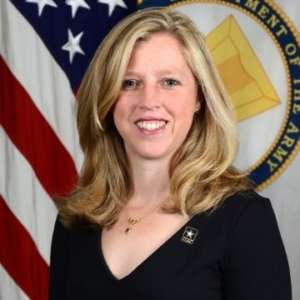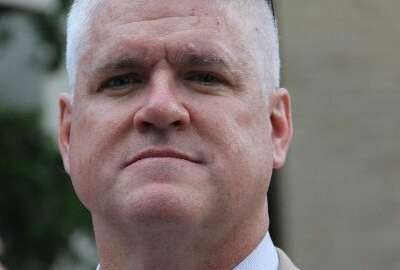
FAA ties supervisor bonuses to employee engagement improvements
Gwen Defilippi, the deputy assistant administrator for human resource management at the FAA, said every supervisor’s performance plan includes employee...
For executives at the Federal Aviation Administration, employee engagement is all about the money.
FAA senior leaders’ performance plans and bonuses are tied, in part, to how they approach and improve their employees’ morale, mission results and their overall leadership.
“Each executive is assigned four-to-seven goals that are in the business plan. They have to meet those goals to receive an incentive at the end of each year. Every executive in the FAA is required to have as part of their business plan goals for employee engagement. So every executive in the agency is committed to maintaining or improving employee engagement and if they don’t, they have a financial impact at the end of the year,” said Gwen Defilippi, the deputy assistant administrator for human resource management at the FAA, on the Courageous HR program. “That causes everyone to get motivated around it.”

Defilippi said by tying financial rewards to employee engagement and the oversight by the FAA business council, the administration’s scores have increased over the last four years. In 2017, the FAA’s employee engagement score on the Federal Employee Viewpoint Survey (FEVS) rose to 68 percent from 62 percent in 2014.
The Office of Personnel Management reported in October that overall employee engagement topped 67 percent in 2017, a 2 percent bump over last year’s score of 65.
The FAA is a bit different than most agencies. Its employees come under Title 49 of the U.S. Code and are able to design their own compensation structure, while most federal employees fall under Title 5.
But Defilippi said based on her experience at other agencies, she believes Title 5 employees also could have their performance goals tied to their incentives.
“I had struggled hard in other agencies to try to figure out how to bring the organizational achievement with the individual accomplishment. As I looked at the way the FAA did it, I thought this could really have a lot of application in the Title 5 world as well. The Title 5 world for executives is rewarding their leaders based on the leadership competencies, the Executive Core Qualifications (ECQs) that OPM designed, published and have been in place for many years,” she said. “One of those is results driven, and what the FAA has done really effectively is put structure around that results-driven objective – every year they design goals to drive the agency forward.”
One of the big differences for Defilippi in the Title 49 world, as compared to the Title 5 world, is how the objectives are focused. She said in other agencies, most of the time performance objectives are focused on the individual person and what they will accomplish. But the FAA is requiring at least 40 percent of a manager’s plan to relate to cross-agency goals.
“That really drives teamwork toward the mission goals of the agency, which I think is kind of neat as well,” she said. “The fact we do have alignment helps us with our employee engagement because when people have clarity of mission, it’s easier to see how you fit into the organization, that what you do matters and how people are being held accountable so that’s certainly one of the areas we focus on with employee engagement conversations.”
At the same time, Defilippi said the FAA requires each component to have a specific plan to improve employee engagement.
“The plans they make to improve engagement are often posted in shared areas so that every employee in the organization has the ability to go in and see what the strategies are and monitor the progress on those,” she said. “It really is fairly transparent in the FAA what the objectives are, how an organization is trying to accomplish them and whether they are meeting their goals or having to revise their plans because reality hit.”
Part of the way Defilippi’s office helps components with their strategies is by bringing in successful executives and national labor partners to share best practices during an agencywide training conference. At the conference, the managers break up into smaller groups to design action plans they can take back to their offices.
“The reality is employee engagement is a local thing. It’s the boss and the subordinate. It’s not really something you can mandate across the board. In the end, engagement happens where the subordinate and the supervisor sit down in the specific location, it’s the relationship they are building, it’s about how they are being recognized and rewarded, and what kind of communication they have,” she said. “Each line of business or staff office has an employee engagement champion, who is helping the executive team in that organization and making sure employee engagement stays front and center. They are helping to design the engagement, keeping us on track to execute the plan, communicating with employees and things like that.”
While a lot of the employee engagement effort is focused on the supervisors and managers, Defilippi said the employees’ input on how to improve engagement also is playing a big role.
FAA uses IdeaHub to request ideas to help improve the operations of the agency or improve engagement. More recently, the administration took those suggestions and created a “Shark Tank” competition where employees presented their ideas to the leadership team, who then voted to implement the best ones.
“We’ve been hosting a working group with representatives from across the agency about what we could do differently to reward and recognize our employees. Part of this is to get some standardization across the agency so one organization is not offering something that another is ignoring,” Defilippi said. “At the end of that, all of those ideas were brought to the leadership team in a ‘Shark Tank’-like way and I think that kind of methodology makes it a little more fun to bring forward the proposals for the people who are receiving it as well as for the people who are putting forward their ideas.”
Copyright © 2025 Federal News Network. All rights reserved. This website is not intended for users located within the European Economic Area.
Jason Miller is executive editor of Federal News Network and directs news coverage on the people, policy and programs of the federal government.
Follow @jmillerWFED
Related Stories





